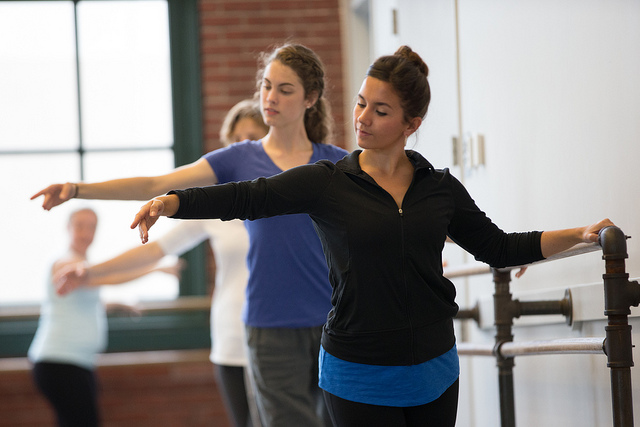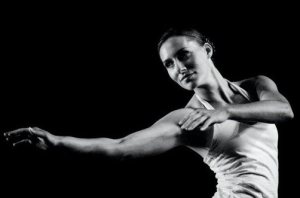
by Katie C. Sopoci Drake
Hey there. It has been a while, hasn’t it? Teaching, the day-job, kids, or just plain old life got in the way. Although you may have been showing others how to dance, practicing yoga, and even performing here and there, it’s not the same as taking class, so now you’re nervous as heck. Now, you don’t have any grand illusions of running off to audition for a national tour (been there, done that), but you wouldn’t mind brushing up on your technique, and making sure you can jump into the odd performance without tearing anything.
But here come the doubts. I don’t know where to go. All of my dance clothes are long gone. I don’t think I’ll be able to keep up. I don’t even know what level I am anymore. I really don’t want to be in an “adult” class with 12-year-olds.
Before I give you the pep talk, first things first…
1. Mission Not Impossible At All: Internet Search Some Dance Classes
Knowing is half the battle, my friends, and if you can learn it from GI Joe, you can learn it from Google. Search for “dance studios in my area”, search for “ballet classes”, or “modern classes” or whatever class you want to take, search “dance school”, search “dance companies”, search it all. Make a list and check it twice, then you can start my favorite part, looking at online reviews, reading teacher bios, and talking to or messaging dance friends about which classes are and are not up to snuff. After all, you’re quality stuff, right? You deserve quality teachers.
Next, call, stop by and get a feel for the place, talk to the staff, and peek in on a class if they allow it. Ask about the average age and level of dancers in class and ask to see a class in session. Don’t be put off if the staff doesn’t allow you to look in on class. This is a common security measure nowadays in dance studios who want to make sure that students and their valuables are safe.
2. Beg, Borrow, Buy Dance Clothes That Fit
Now, unless you’ve been teaching the class you’re about to take, you might not have the right clothes. Just don’t go out and buy up the entire stock of Discountdance.com for your new class because you don’t know if you’re going to stick with it (let’s be honest). Just make sure you have one outfit to wear that you feel good getting sweaty in, that stays put when you’re stretching, and won’t make you feel out of shape.
This goes for undergarments too. You’re not just sweating, you’re stretching and moving. Make sure your fabulously comfortable dance pants aren’t being sabotaged by undies that don’t stay put through a single squat. Take your duds on a test drive in your living room. If they don’t work, get something that does. We’re going for clothes that make you forget you’re wearing them so you can concentrate on what’s most important: moving your body.
If you have any doubts, call your chosen dance studio and ask them what their students are wearing. If they take class, ask them what they wear and where they got it. If their studio policy allows it, drop by and take a look at an adult class (preferably the one you want to take) and see what everyone is wearing.
Yes, this sounds obvious, but I’ve had to pull plenty of new students aside, who took dance when they were young, to gently let them know what to wear and not to wear in class. If no one tells you, how are you supposed to know, right?
3. Buy Footwear In Person
Footwear has changed a lot since you’ve last danced. Your feet have changed a lot since you’ve last danced.
You must get new footwear (no stinky and cracked old shoes for you) and do it in person to ensure proper fit. Once you’ve found a brand and size that works for you, you can buy online. Do a bit of internet searching for a place near you or save time and call your chosen dance studio and ask their advice. Believe me, they’ll have one or two places on hand that they work with regularly (ask them if they have a deal for their students to get a discounted rate) or they may have product they sell on site.
Make sure your shoes are prepared and broken in before class. Retail stores will often help you to prepare your shoes or tell you what needs to be done with them. Then make sure you try them out so that you don’t have any surprises during class.
If you are barefoot dancing, expect that your feet will need to build up calluses again so be prepared with some cotton socks on the side-lines. Test out your dance socks to make sure they’re not too slippery on the marley or a wooden floor. Also, forgo that pedicure. Barefoot dancing often means that you’ll scrape off that polish if you do any drag-turns or floor-work and studio owners won’t look kindly on bright red toenail polish marks on their floors.
4. Finding The Right Level For You
When jumping back into dancing, or trying a new style for the first time, always get the advice of the studio you are going to attend. Every studio has a different method to their levels and you can expect that “intermediate” at one studio will probably be different than “intermediate” at another. It all depends on who is teaching, what they are teaching, and who is coming to their class. Here are some tips I give new students when they ask me for advice:
- Daytime classes are often more difficult than evening classes and weekday classes are harder than weekend classes. This is because professional dancers drop in during the week and during the day. Those professionals are regular students and regular students will always be a determining factor in the pace and level of dancing in a class. Weekend classes are often when the “once-a week” dancers come around and they’ll be the most gentle.
- Ask the studio what vocabulary you can expect in each level and at what pace it is presented. For codified techniques your level of vocabulary is going to largely determine your level. Always pick one level down from where you think you might be at for your first class. This will give you a chance to rest on your previous knowledge while picking up your new teacher’s method of presenting the exercises.
- Pace is also an important determining factor. Because some types of classes are often taught from a specific approach or set of concepts (think hip hop, somatic-based modern, improvisation), your familiarity with these concepts, plus the regional style (west coast is different than east coast, Chicago style is different than Miami style) your familiarity with that specific teacher’s approach will be key in determining your level. Therefore you should choose a slower-paced class until you are familiar with their specific method of approach.
- Strength and stamina is the last determining factor. You might be able to demonstrate the dickens out of things while teaching but your ability to maintain that muscular attention throughout the course of multiple exercises may have diminished over time. Be gentle on yourself. No need to blow out your Achilles tendon in one advanced class when you can build back your ankle strength over time in an advanced-beginning class. You’ll have plenty of company in the lower-level classes with the professionals who need a lighter class during performance week or when recovering from an injury.
5. Expect Imperfection and Stay Humble
It’s been a while, you don’t know this teacher, they might be younger than you, their approach to the technique will be different from what you remember being used to, and dancing is not like riding a bike (you and I know it’s closer to riding a unicycle while juggling puppies and reciting a monologue with feeling). Expect that you will not be perfect in this class, expect that they have something to teach you even if they present it in a way you aren’t used to, and then expect that you will also, logically, get better.
Do check in with the teacher after class. They are there to support you and part of that support is giving you guidance on level placement and recommendations for additional classes that might benefit you. Don’t be shy about asking for pointers.
Now, the pep-talk. You’re back for a reason. You love class, you miss it, you want to feel that good feeling again and you’re not going to let a little thing like a rocky first class or a new technique get in the way. It’s never too late to learn something new or improve your existing technique. After all, you have to show those young dancers what they have to look forward to.
Go get ‘em, dancer!

Photo by Scott Pakudaitis
Contributor Katie C. Sopoci Drake, MFA, GL-CMA, is a Washington D.C. based professional dancer, choreographer and teacher specializing in Laban-based contemporary dance. Holding an MFA in Dance from the University of Wisconsin-Milwaukee, a Graduate Certification in Laban Movement Analysis from Columbia College – Chicago, and a BA in Theatre/Dance with a minor in Vocal Performance from Luther College, Sopoci Drake continues to take classes in as many techniques and practices as she can handle to inform her work and life as a curious mover.
Katie has been on faculty at University of Maryland, College Park, University of Wisconsin-Milwaukee, Nova Southeastern University, Miami Dade College-Wolfson, Miami Dade College-Kendall, Carthage College, and Lawrence University. She currently guest teaches and gives masterclasses around the D.C. area and wherever her travels take her.
As a performer, Sopoci is described as a “sinuous, animal presence of great power; watching her dance is a visceral experience.” (Third Coast Digest). Company credits include Rebollar Dance of Washington DC, Mordine and Company Dance Theater of Chicago, Momentum Dance Company of Miami, Wild Space Dance Company of Milwaukee, and Rosy Simas Danse of Minneapolis. Katie has also made appearances an an independent artist with many companies including Brazz Dance, Your Mother Dances, The Florentine Opera, and The Minnesota Opera.
Katie’s choreography, described as “a beautiful marriage between choreography, music and poetry” (On Milwaukee), arises from her fascination with the idiosyncrasies of daily life, and the flights of fancy that arise from ordinary inspirations. Her work has been performed by numerous companies, colleges and studios across the country and her latest collaborations with Mountain Empire Performance Collective will take her to states up and down the East Coast while investigating long-distance creation and connecting far-flung dance communities.





Great work Katie! Good read to get people motivated right before the New Year!